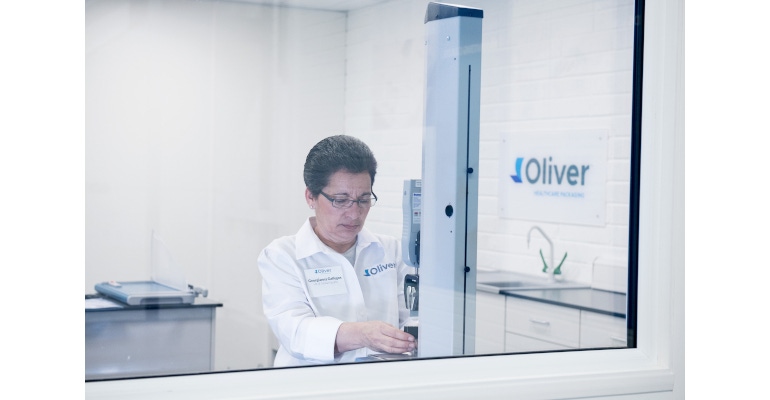From Machine Operator to Head of Quality
One woman’s journey in medical device packaging.
March 29, 2021

I joined the United States Air Force and began working after serving my country. I started my career in manufacturing more than 37 years ago. I still remember walking into my first job, starting at the entry level. I was hired for lamination and printing primarily, and the company manufactured packaging for consumer products like camera film, fertilizer, coffee, and even food. It was here that I first learned about converting, and I quickly began taking on more responsibility, getting to understand the full process including slitting, pouching, and more.
In 1990, I was hired by Mangar, a Pennsylvania-based medical packaging company that was eventually acquired by Oliver Healthcare Packaging, where I serve today as global vice president—quality. That first role at Mangar was as a machine operator for a special project for Johnson & Johnson. Mangar was excited to have the opportunity to work with a company like J&J and needed someone to run the equipment it had purchased for this project. That’s where I came in. Not many people had the converting experience I had back then, and they needed to hit the ground running. Little did I know, 31 years later, the depth of experience I would get. Plus, I still get to work with some of those same friends at Johnson & Johnson today.
In my career, I have played many, many roles. I have worked in production, graphics, quality assurance, quality engineering, customer service, and more. I have worked on the manufacturing floor, and in an office. I now work from planes, trains, and automobiles frequently, and one thing has always been the same for me, regardless of my role. Wherever and whenever I can help a customer succeed, that’s right where I want to be. There’s nothing better than being a part of that.
When I reflect on the industry and the changes I have seen, a few things come immediately to mind. First up, compliance. When I first started, converting was primarily regulated by the U.S. FDA. In 1987, ISO 9000 was published by the International Organization for Standardization, and ISO 9001 came soon after with worldwide adoption. ISO 9001 is a quality management system with a focus on everything from document control, training, and change management to root cause analysis, risk management, auditing, and corrective action. In 1996, ISO published ISO 13485 for medical devices, which is similar to ISO 9001, but is more customer centric and has a greater focus on risk requirements. ISO 13485 is still what we follow today, although the standard has been updated since then, with an overhaul in 2003, and one again in 2016. I made a joke to a friend the other day, saying that back then … product was created in a tent where people openly ate their lunch near the equipment. Now we have stringent cleanroom requirements and standards for particulate, bioburden, endotoxins, and more. While I was certainly being tongue in cheek, I’m sure many of you remember the days I’m talking about.
The second big change in my mind is around education. When I first started out, packaging wasn’t necessarily something that was widely offered in college curriculum. Medical packaging was even more niche and hard to find. The education we got was hands on. It was all about standing shoulder to shoulder with others in the industry to collaborate, grow, and work together. We all attended meetings from organizations like ASTM International. People would gather, discuss, test, and generally come together to learn, to be better and stronger. Aspiring packaging professionals today are lucky to have several universities offering packaging curriculum. There are industry-wide conferences for medical packaging today, and many associations around the world dedicated to this field as well.
The last notable change in the industry—at least for me—is the diversity we see in manufacturing today. As a machine operator back in the day, I was a rarity. I clearly remember interviewing for my first job, and I ended my interview by saying: “Don’t be afraid to hire me because I’m a woman.” I spoke up for myself because I knew I could do the job. Machine operators were primarily men, but I was young, strong, and healthy, with a keen appetite to prove myself. I was smart and I paid attention, and it paid off. I learned everything I could and worked my way up. I think we still fight stereotypes today, such as men belong on the manufacturing floor, while women work in roles like customer service or quality. But day by day, and little by little, we’re breaking those stereotypes down. In my career, I never gave thought to whether it was a man or woman asking for help or partnership. If people need help, you just step up and do it.
I’m proud to be one of the early pioneers in medical packaging and converting. We’ve come a long way. My one hope for the next generation of packaging professionals is that no matter how big we get, how competitive we are … that we never stop collaborating with one another. Those early days were a lot of fun, when we lived and breathed packaging. Evolution is important, but there are a lot of critical lessons we can learn from the past, too.
About the Author(s)
You May Also Like

.png?width=300&auto=webp&quality=80&disable=upscale)
